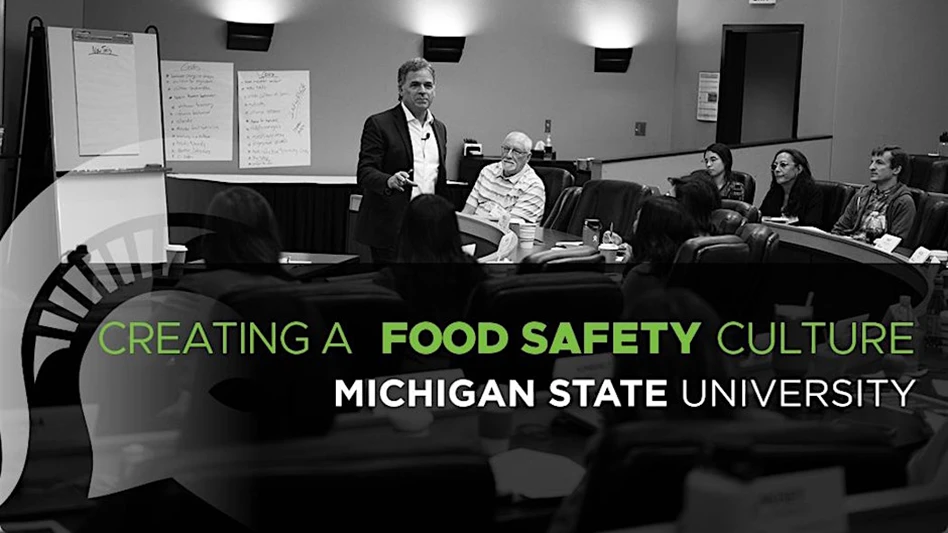As sustainability becomes an ever-increasing consumer concern, retailers are asking more of manu-facturers supplying their products — including those in the food chain. A prime example of the trend is the sustainable packaging initiatives being driven by Wal-Mart Stores.
Wal-Mart’s environmental goals focus on being supplied 100 percent by renewable energy, creating zero waste and selling products that sustain resources and the environment.
To ensure that products sold in Wal-Mart stores meet its sustainability initiatives, its buyers have four questions they are expected to ask for every product purchased, said Caren Epstein, director of public relations and brand reputation:
Does it maximize efficient use of materials, close material loops and minimize waste?
Does it promote the integrity of nature and a safe, reliable supply of natural resources?
Does it maximize the use of renewable energy and/or minimize greenhouse gas emissions?
Does it promote quality of life and safeguard human health?
To track vendor progress toward more sustainable packaging, and pro-vide a tool enabling Wal-Mart and Sam’s Club buyers to make more in-
formed purchasing decisions, the company introduced a scorecard in 2006, Epstein said.
In February 2008, an online version was added, by which suppliers could measure their product packaging in relation to Wal-Mart environmental goals. Item packaging receives a grade based on the results, and suppliers can learn about ways to improve their packaging.
The scorecard also provides Wal-Mart with an overall assessment of its progress, as it "tracks our progress to reduce packaging in our supply chain by five percent by 2013," Epstein explained.
A Wal-Mart Fact Sheet details conservative annual estimates of this re-duction (for Wal-Mart U.S. only) to be:
667,000 metric tons of CO2 not emitted into the atmosphere.
213,000 trucks off the road annually.
66.7 million gallons of diesel fuel saved.
In assessing suppliers toward this end, "buyers may show preference for those suppliers who have demonstrated a commitment to producing more sus-tainable packaging," Epstein said.
A few examples Epstein provided include:
All cut fruit and 40-ounce vegetable trays are packaged with biodegrad-able products from renewable resources. In addition, some nine-ounce vegetable trays, bags of spinach and green onions are packaged in this manner.
By changing the packaging on just four produce items, Wal-Mart estimated a savings of 800,000 gallons of gasoline and prevented more than 11 million pounds of greenhouse gas emissions from polluting the environment.
At Kraft, anaerobic digesters were installed in a plant to convert the waste stream from cream cheese production into methane gas, replacing 30 percent of their previous natural gas usage and eliminating 100 percent of whey land-spreading waste.
Sara Lee, producer of Hillshire Farms and Jimmy Dean products, reduced the height and weight of a deli container, enabling use of 900 fewer trucks and 28,000 fewer pallets, and saving 253 tons of plastic and 533 tons of carbon dioxide.
By flattening the noodles in Hamburger Helper, General Mills reduced packaging by 30 percent.
Selling only concentrated liquid laundry detergent in all U.S. Wal-Mart stores and Sam’s Clubs since May 2008 is expected to save more than 400 million gallons of water, more than 95 million pounds of plas-tic resin and more than 125 million pounds of cardboard.
The primary goal of Wal-Mart’s sustainable packaging initiatives is to be "packaging neutral" by 2025. This means that all packaging recovered or recycled at its stores will be equal to the amount of packaging used by the prod-ucts on its shelves.
As such, Wal-Mart defines its 7 R’s of Sustainable Packaging as:
Remove: Eliminate unnecessary pack-aging, boxes or layers and harmful materials.
Reduce: "Right-size" packages, opti-mize material strength and design packages appropriately for contents and merchandising requirements.
Reuse: By 2011 all transport pack-aging should be reused or recycled through improved pallets and reus-able plastic containers.
Renew(able): Use materials made of renewable resources or select biodegradable materials.
Recycle(able): Use materials made of the highest recycled content
without compromising quality and choose components based on post-use recycleability.
Revenue: Achieve all principles at cost parity or cost savings, which requires a complete supply chain approach.
Read: Get educated on sustainability and how suppliers play a part.

Explore the March 2009 Issue
Check out more from this issue and find your next story to read.
Latest from Quality Assurance & Food Safety
- Non-GMO Project Launches Non-Ultraprocessed Foods Verification
- FDA to Hold Webinar on Updated ‘Healthy’ Claim
- High-Tech Partnership Creates Natural Blue Color for Greener Tomorrow
- Kraft Heinz Hosts Innovation Challenge for Sustainable Packaging
- FDA Requests Information on Poppy Seeds
- Danone North America Opens Applications for Annual Gut Microbiome, Yogurt and Probiotics Fellowship Grant
- WSDA Confirms First Bird Flu Case in 2025
- Senators Call Out FDA for Proposed Cuts to State, Local Food Safety Programs




